June 21st 2023, Whitehorse, The Yukon.
There are times riding Highway 37 deep into British Columbia and nearing the crossing into The Yukon when everything you see all around you, and I mean for miles and miles and miles, appears to be utterly devoid of people, or any sign of their existence. It is an odd experience — unsettling in a way, which I did not expect it to be. Rattling along the highway with the noise of my engine purring contentedly under me, but not seeing another soul, or car, truck or biker, for maybe 50 miles, I can feel very alone inside my helmet. I knew there would be times the further north I got when the sense of isolation would be great but I had not expected to be bothered by it. And then I ride a great long stretch and notice in the verge, sticks with orange signs on them. Eventually I stop to see what they are — Caution, they urge, fibre optic cable. And you realise man’s activities are never really that far away.
As I moved through north central BC, in the far distance, Tuktsayda Mountain (2,276m) was snow covered and looked impressive but it was the landscape closer to hand that held my attention. It was undulating and rolling between rivers and lakes and was dominated by Rocky Mountain Fir trees, as well as by Aspens with their distinctive trembling, or quivering, leaves. The Rocky Mountain Fir is an ugly thing — tall, but not huge, has little volume and if anything is somewhat scrawny. It looks black — if not bleak. Its lower branches don’t grow outwards much, and neither do its upper ones, leaving the impression of a sort of uniform width, as opposed to the triangular shape, wide at the bottom and narrow at the top, of other trees in the pine family. It can grow in great forests stretching all over the landscape or be scattered individually, peering above lower growers, giving it a sort of giraffe neck quality.
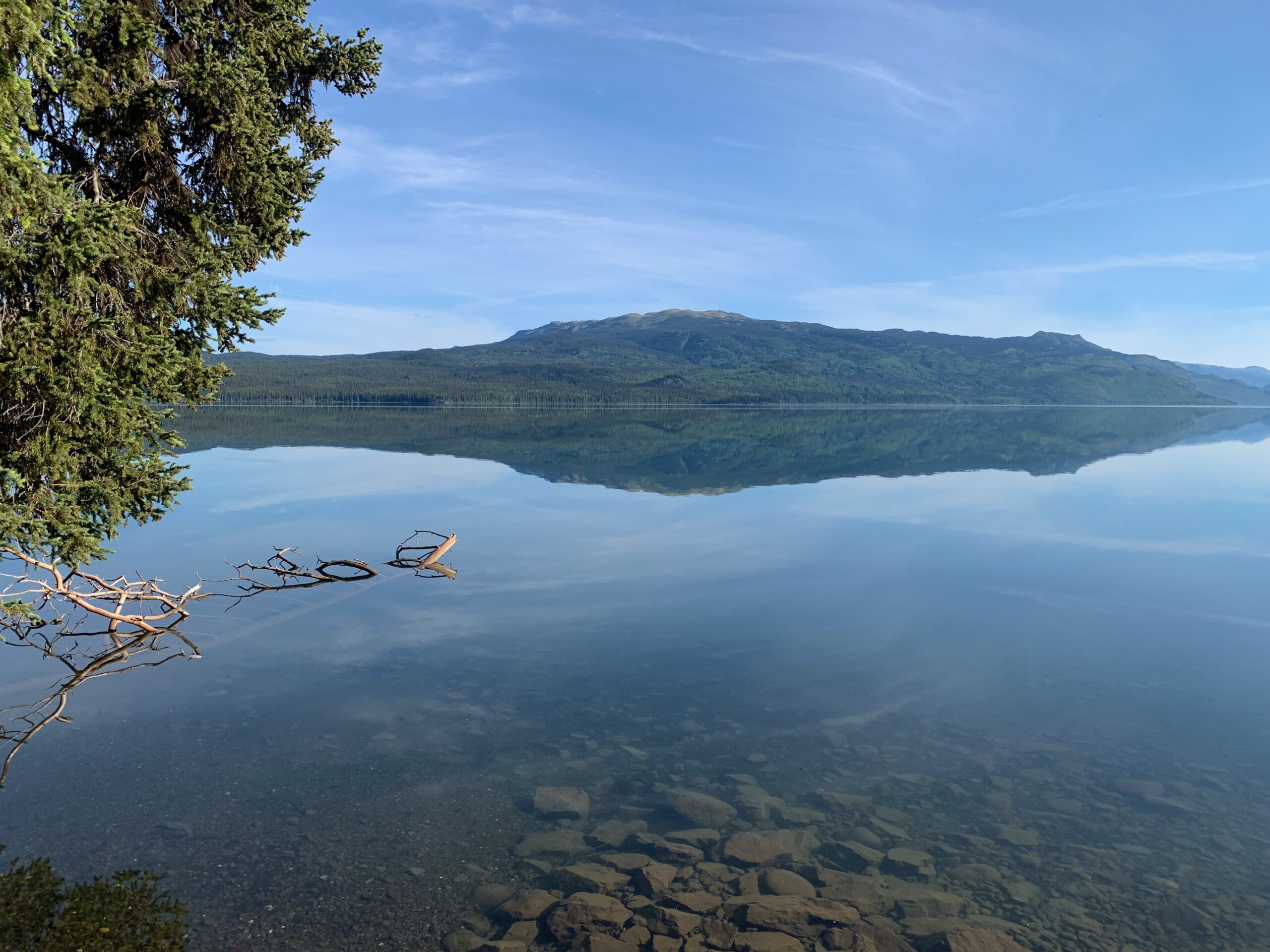
I spent the night at Kinaskan Lake Campground, which is actually, and confusingly, sited on the shore of Lake Natadesleen, just beside the other one. It was beautiful, absolutely stunning — tent sites right down on the water’s edge, beautifully calm with that oily, glassy surface as the sun set. Next morning, I watched a Spruce Grouse padding about my neighbour’s RV pitch, pecking away at the ground hoping for breakfast before I hit the road without having had any myself.
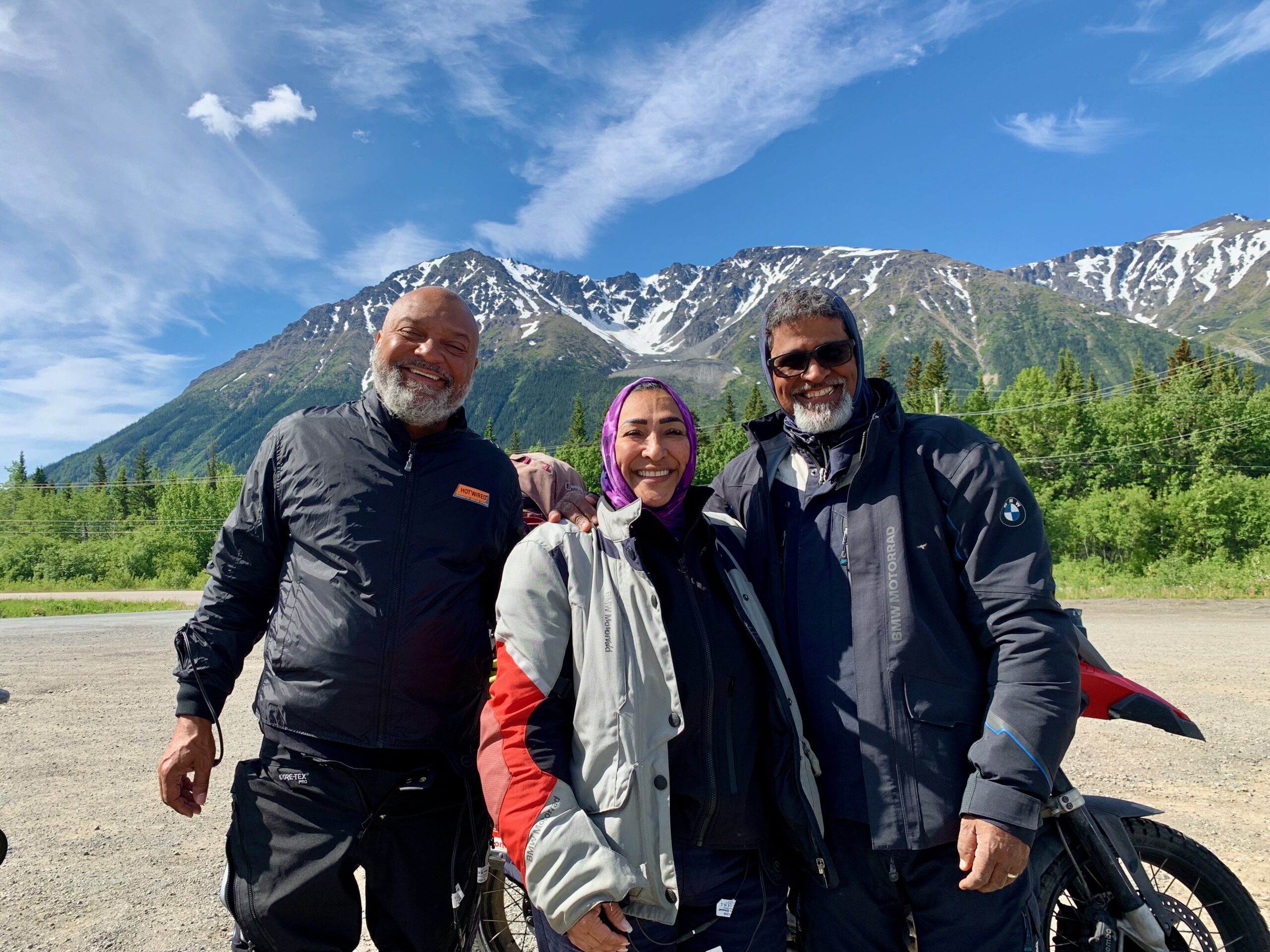
I stopped at a gas station and eatery near Iskut and, walking inside, was greeted with a “Wo-ho! Look at this, man!” from one of three bikers already seated at a table, followed quickly by questions as to who I was and from where etc. The speaker was a large fellow with an equally ebullient personality — one of a team of three from Los Angeles: Dimples (‘cus she has them, centre above), Smiley (her partner and because he does, right) and X man (aka Xavier, the group’s Entertainment Officer, left), the one who started asking the questions — even before I could! We quickly settle into conversation and shared breakfast (Xman insisting, generously, on paying for my two pancakes and coffee).
“I’m a bum, Peter,” says X man self-deprecatingly when I ask him what he does, but then he goes on to say: “I used to be in the USMC, the United States Marine Corps, and then I drove the subway tram.” He goes on to tell me he was a Marine Machine Gunner, “that’s an MOS 0331, that’s what they called it. I was in Desert Shield, that’s what they called that before it became Desert Storm. The MC brought me around the world.”
Outside, we do some pictures and decide to ride a while together a while. I tell them I want to stop at Boya Lake, which is a few hours up the road and had been recommended to me as one of BC’s “must see” places. When we do just that, it’s an absolute knock out for beauty — a turquoise gem twinkling in the sunshine and surrounded by pine forests. X man et al are suitably impressed, as am I.
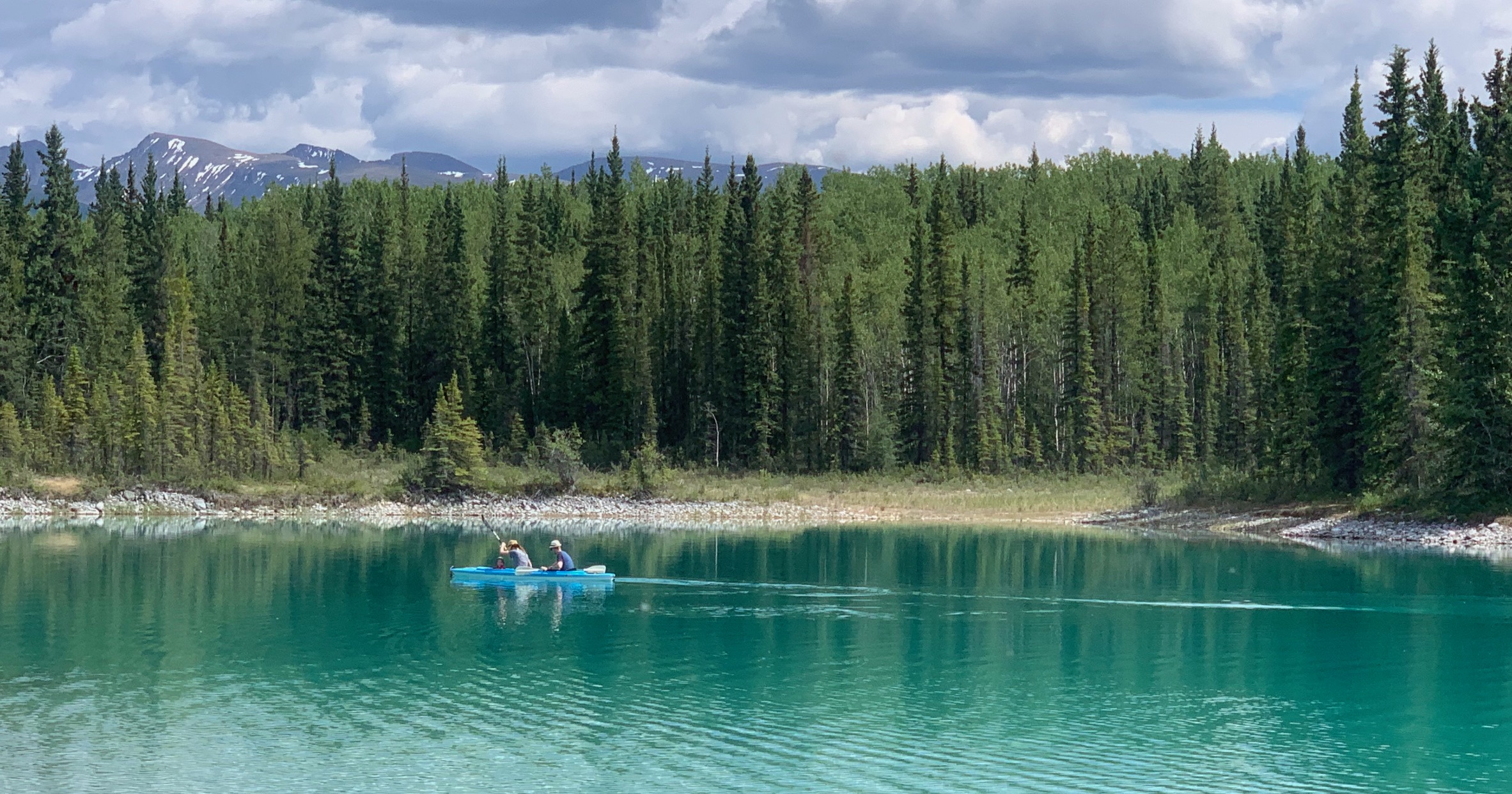
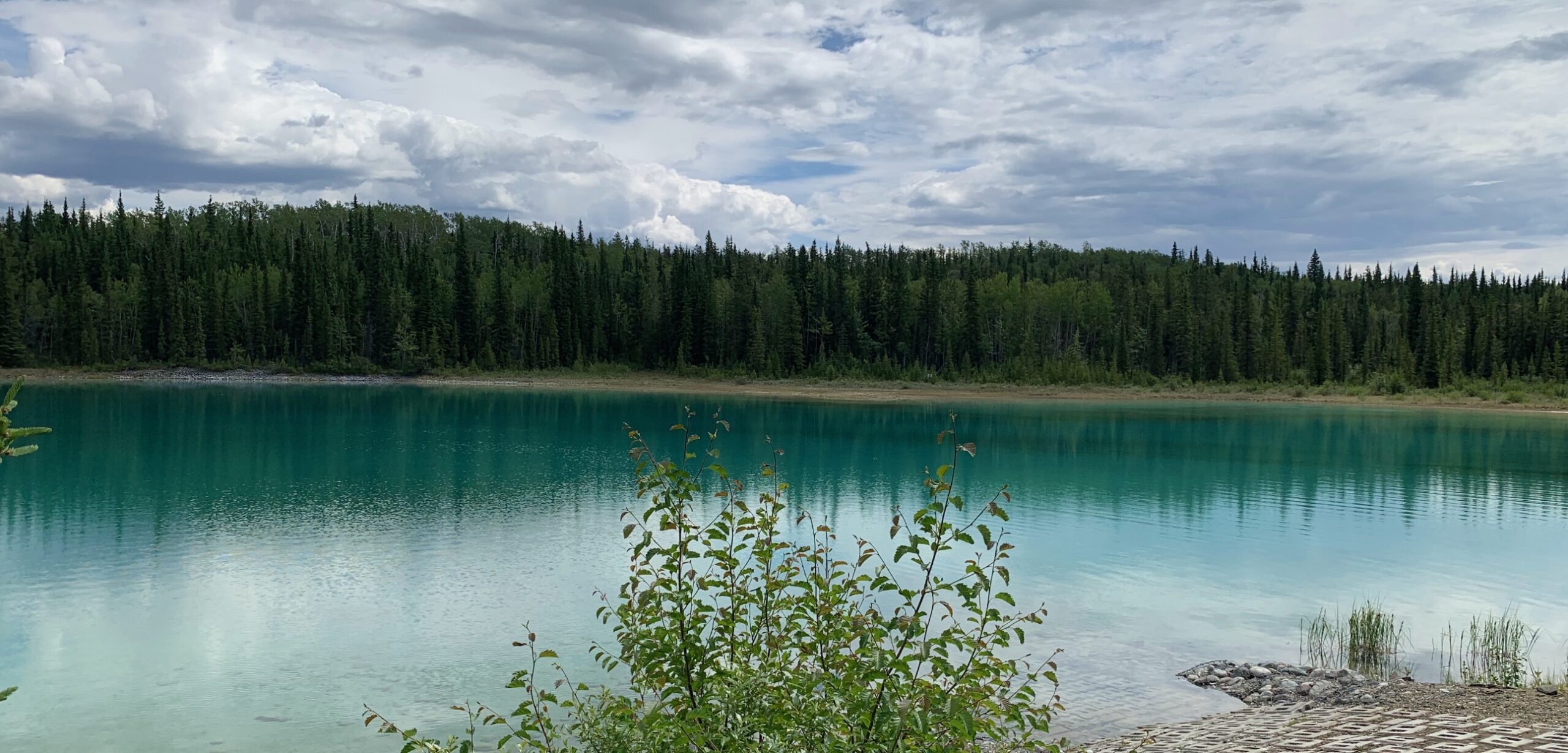
Next stop is the Yukon border sign where stickers are applied, photos taken and Smiley rides his GS up the muddy bank to the foot of the sign like he’s done it 10 times before. He hadn’t and was inordinately pleased with himself. He jumps up on it to get as high as he can, placing one of his stickers onto the big sign.
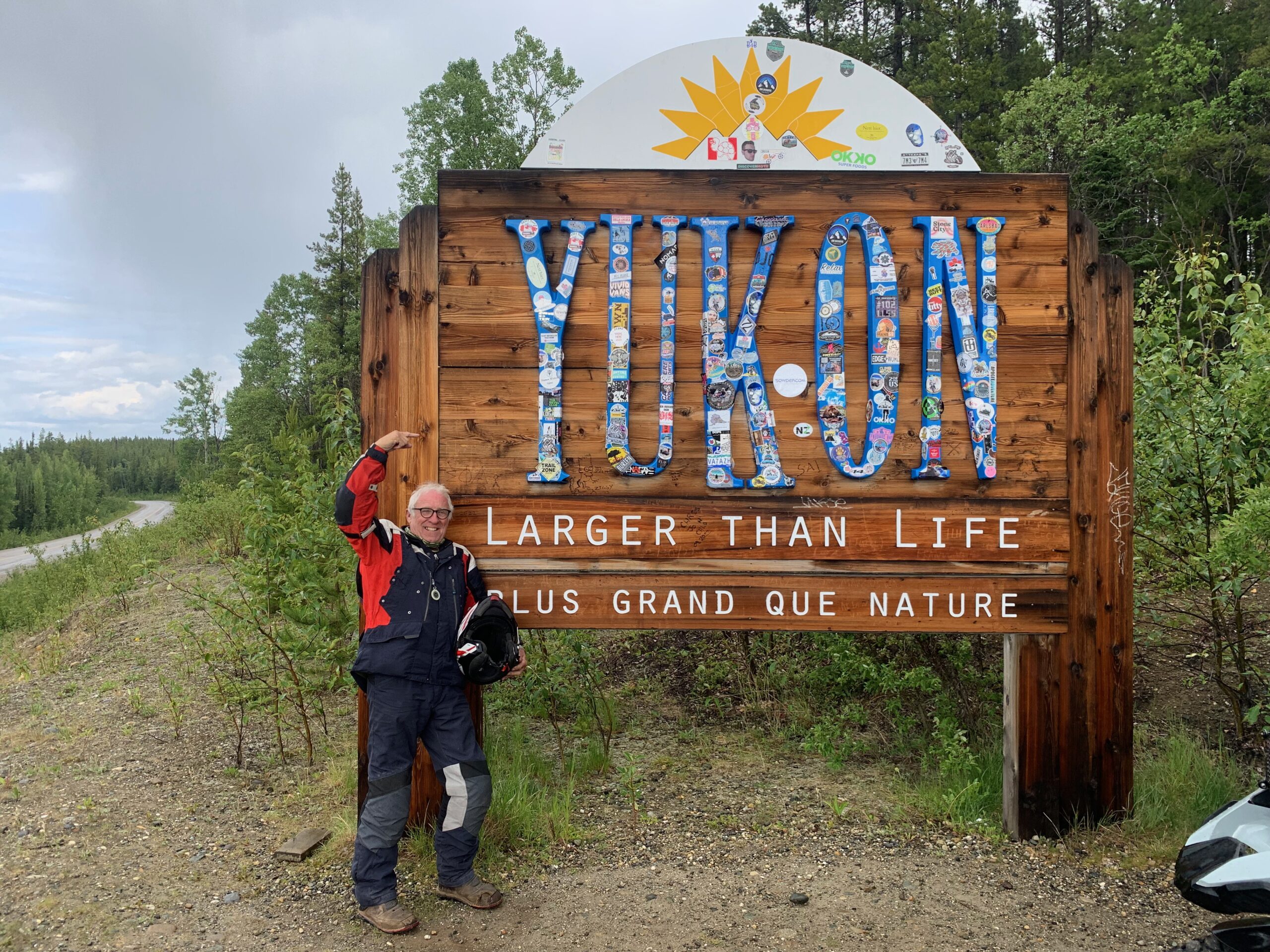
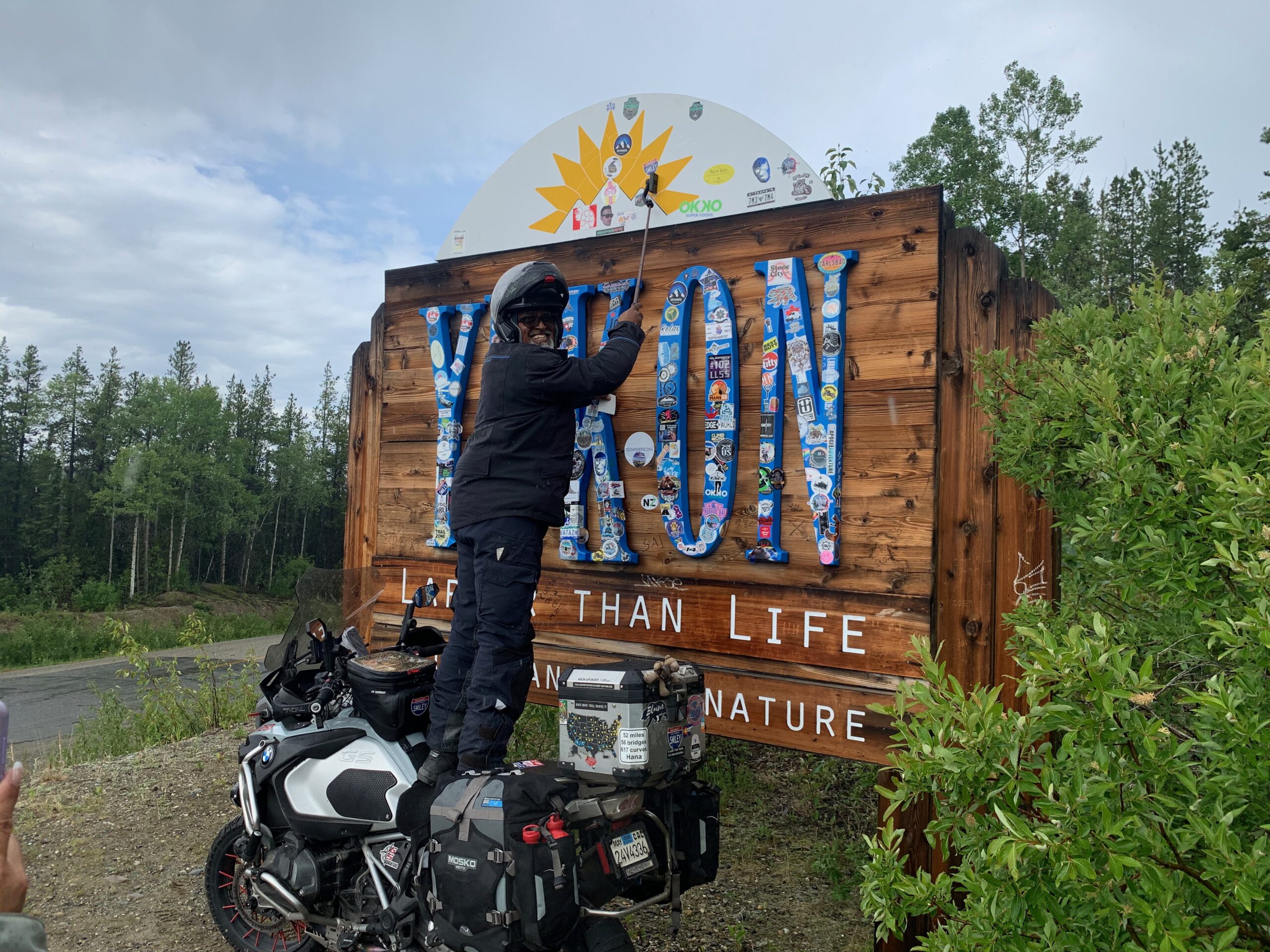
We rode on to Watson Lake, to the sign forest there. Started in 1942 by a homesick GI, it is now home to thousands of place signs, from all over the world, assembled on poles and in circles, a bit like a maze. Another good Photo op — a must stop for all bikers!
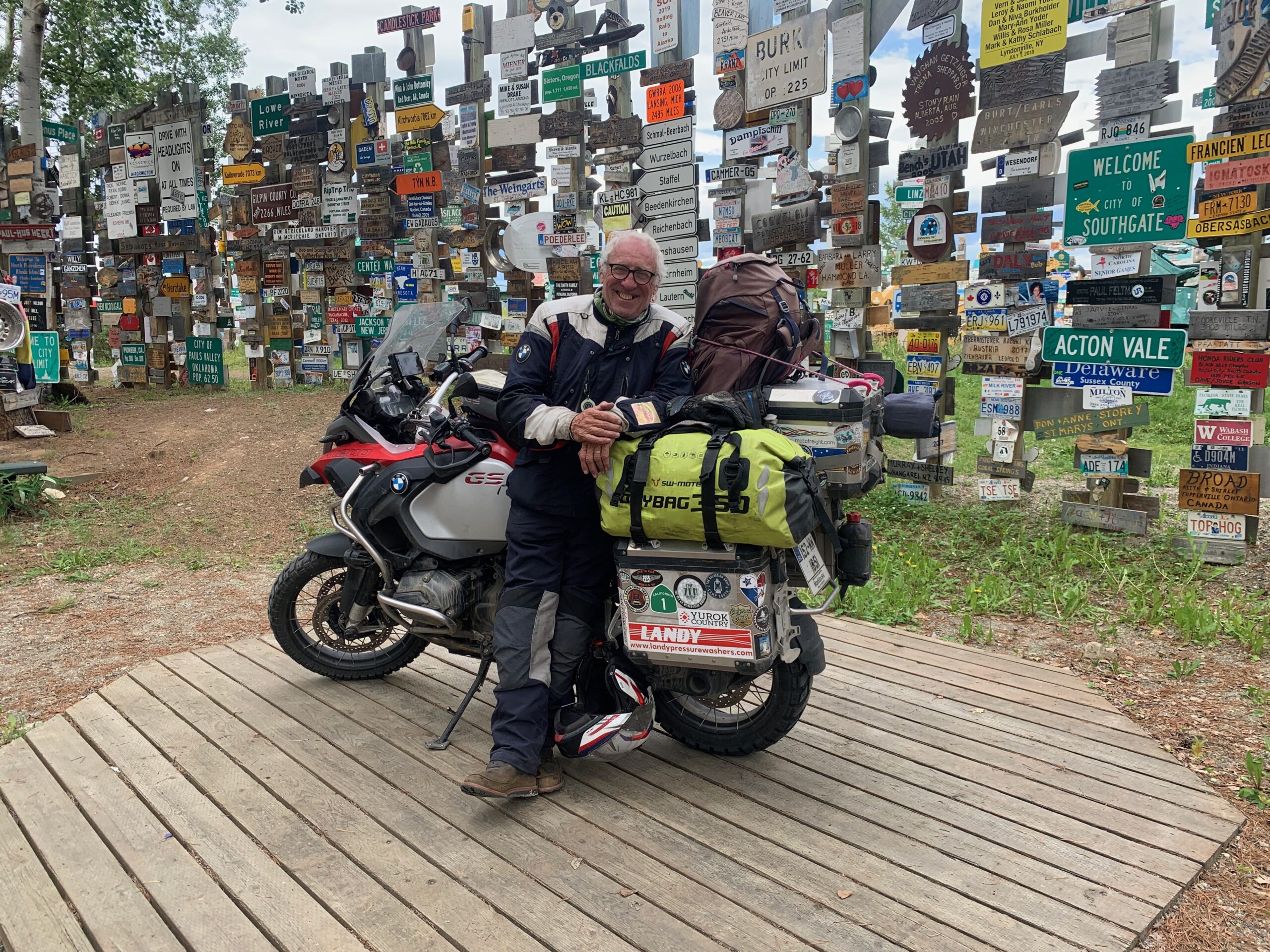
The guys are into biking huge distances. They think little of covering 700 kms a day — way more than I am willing to do. Having done four hours biking and 340 kms to get to Watson Lake, they’re going to press on to Whitehorse — another five hours and 440 kms. I just don’t trust myself to do that sort of distance and keep thinking of the friend of Luis, the BMW guy in northern Chile who looked after me there. There was a wrecked GS in Luis’ workshop and I asked him about it. A friend’s, he said, was in the Atacama, drove too far and fell asleep. Lost his leg . . .
I’d prefer to avoid that fate and so, after a few kms more, I bade farewell to X man, Smiley and Dimples who rode on, and some days later, made Prudhoe Bay and get home again safely. I bed down for the night at the Nugget City RV and Campground just inside The Yukon. I can’t quite believe that I am actually in the Yukon. For me the very name Yukon is associated with a very particular landscape and weather of great extremes, a place where men and nature struggle, where survival is far from guaranteed, a place made famous in my imagination by Jack London and his “great white silence” and the epic struggle of the man trying to light a fire. The word has a certain magic and romance all over it.
However, on this particular evening, the most memorable thing for me was finding a squirrel, sitting on my motorbike seat like he was ready to hit the road, rummaging for some chocolate he could smell in my fleece pocket lying there. And not a bother on him when I hoved into his view . . .
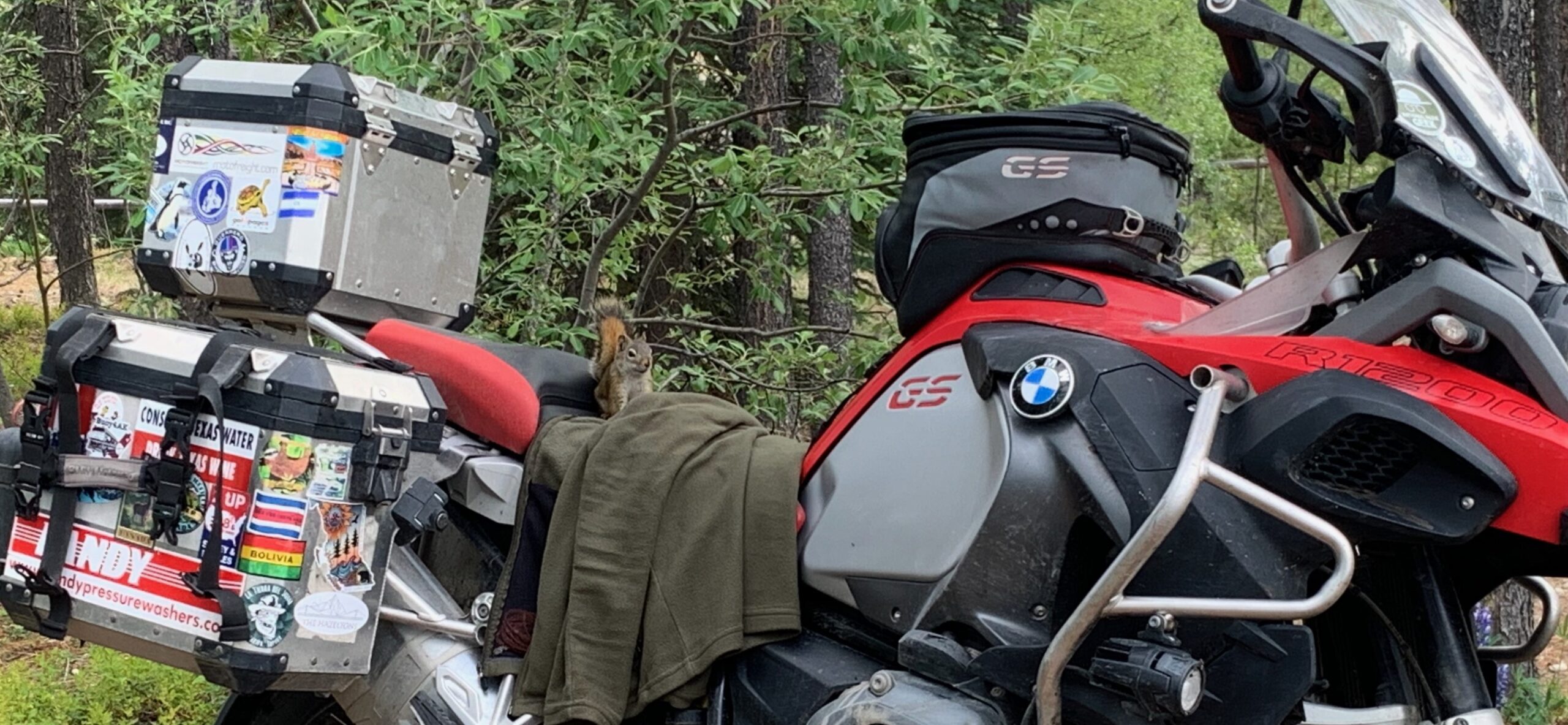
Next day, I made straight for Whitehorse along the Alaska Highway and a campsite just before the city that specialises in catering to bikers. It looked a bit unpromising at first — or maybe worse even — but it’s shaping up to be a fantastic place, maybe the best biker pit stop in the Yukon.
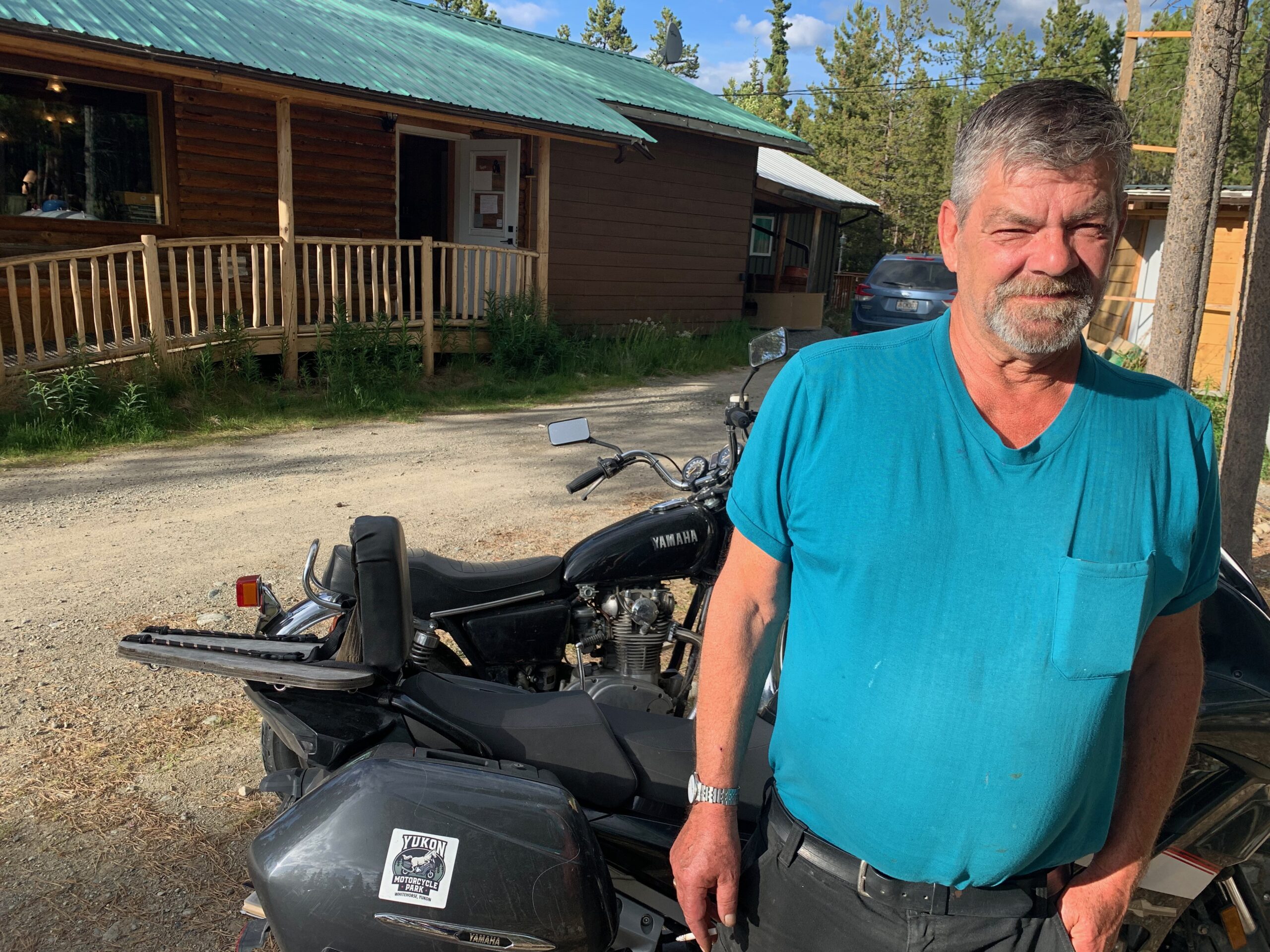
It is the project of 67-year-old Bruce Martin from Vancouver but long time Whitehorse resident. In May 1986, “I was working at a young offenders facility in Alberta and came here as a volunteer in a correctional facility” and never really left, he told me. He’d always been into bikes — Hondas, Ducattis and once owned a 900 Mike Halewood replica. Down in Vancouver one day, he noticed the huge number of bikers heading north — “counted 75 of them”, he said, and thought there was a business opportunity in there somewhere. From late Spring to early Autumn, hundreds of bikers Hundreds of bikers set out north through British Columbia an d into The Yukon, where they’ll do Whitehorse to Dawson and maybe the Dempster Highway to the Arctic Circle and Tuktoyaktuk in the far north of Canada’s Northern Territories, or head into Alaska and do much the same, maybe even tackling the Dalton Highway to Prudhoe Bay.
“I want this to be a full service facility for the long distance rider,” he said. “I want to have everything here that a guy like you needs and I want you to leave here saying you’ll come back and also recommend it to other riders.”
Right now, the place is basically a building site but you can see where its going.
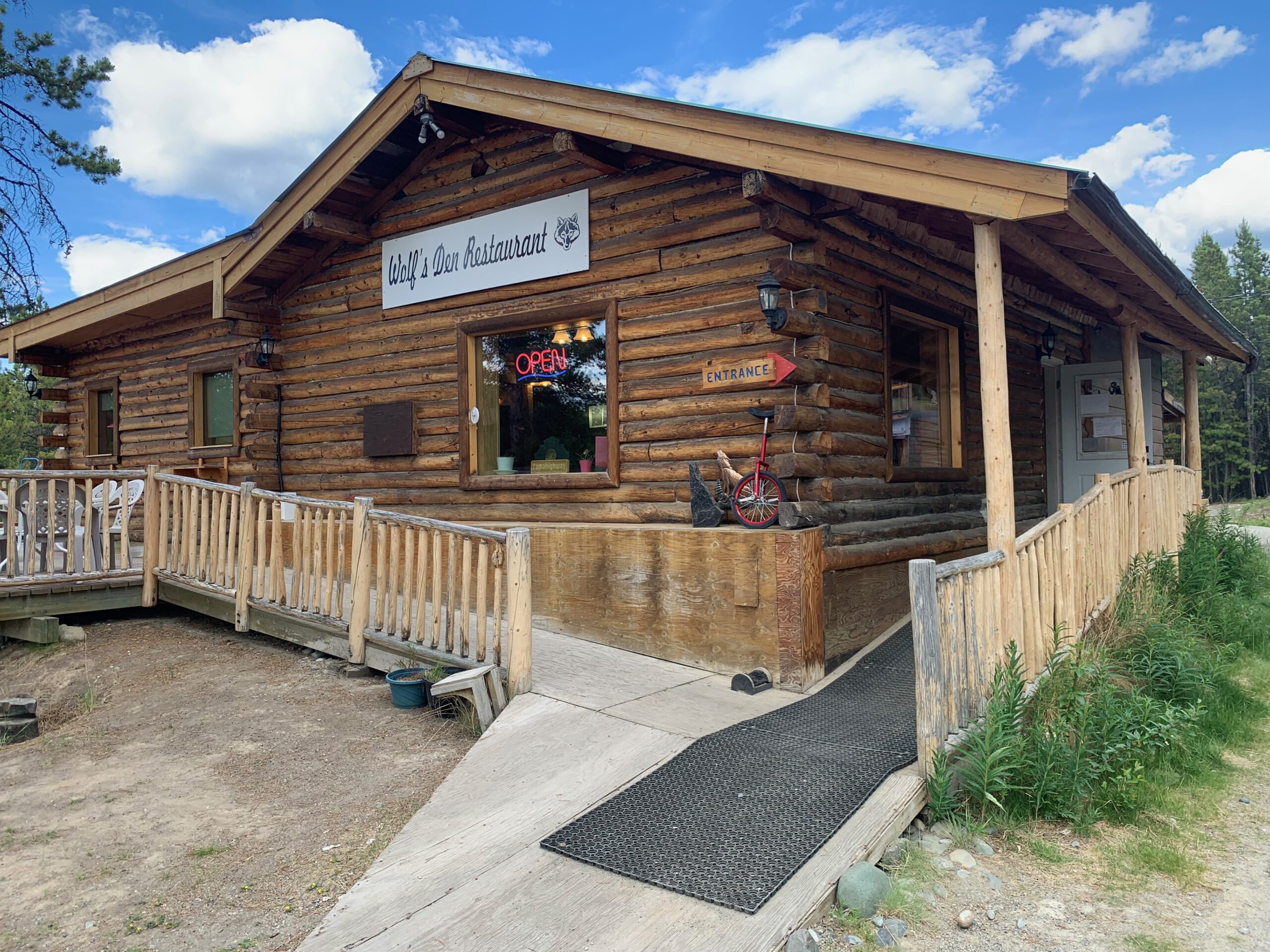
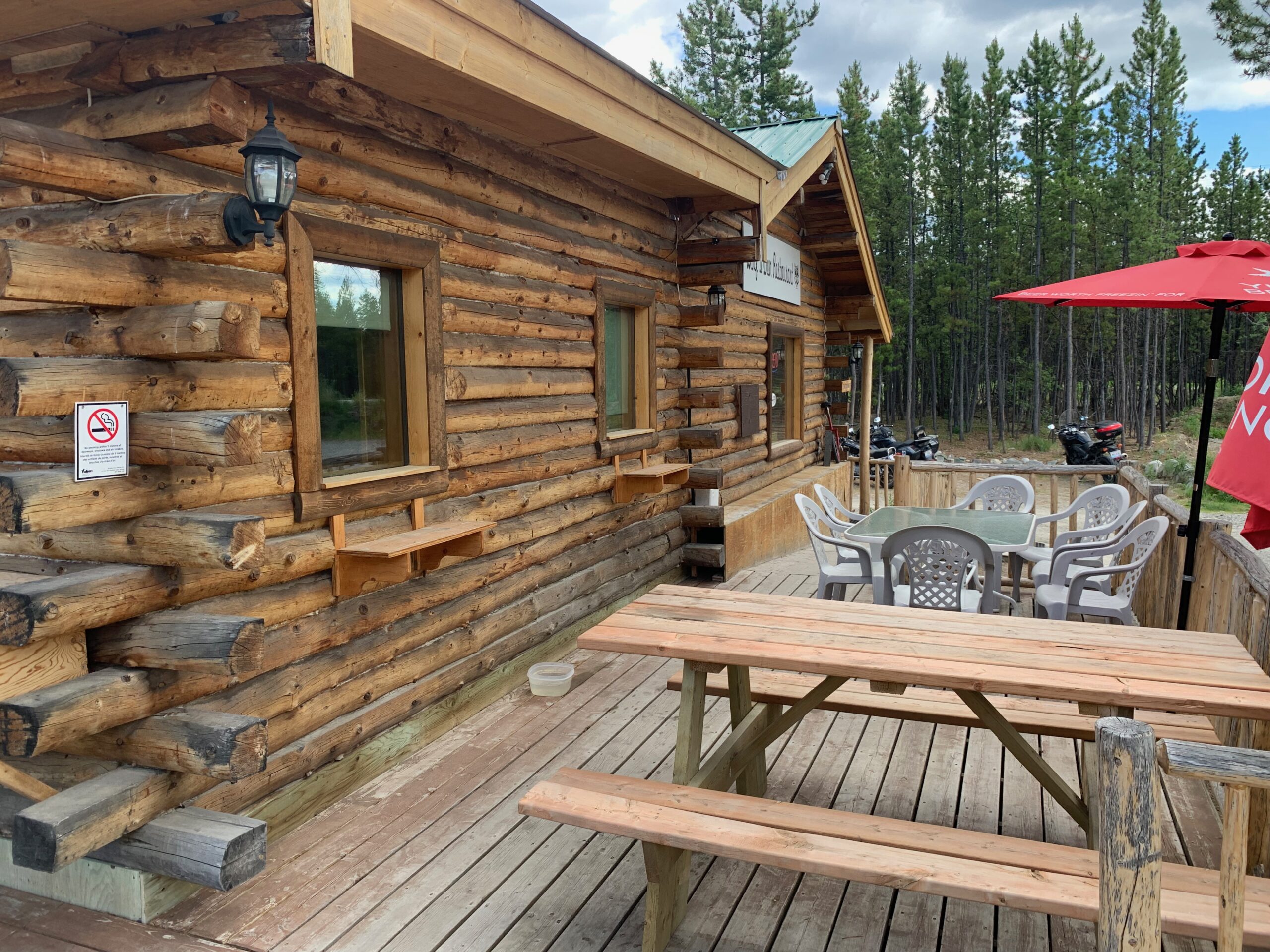
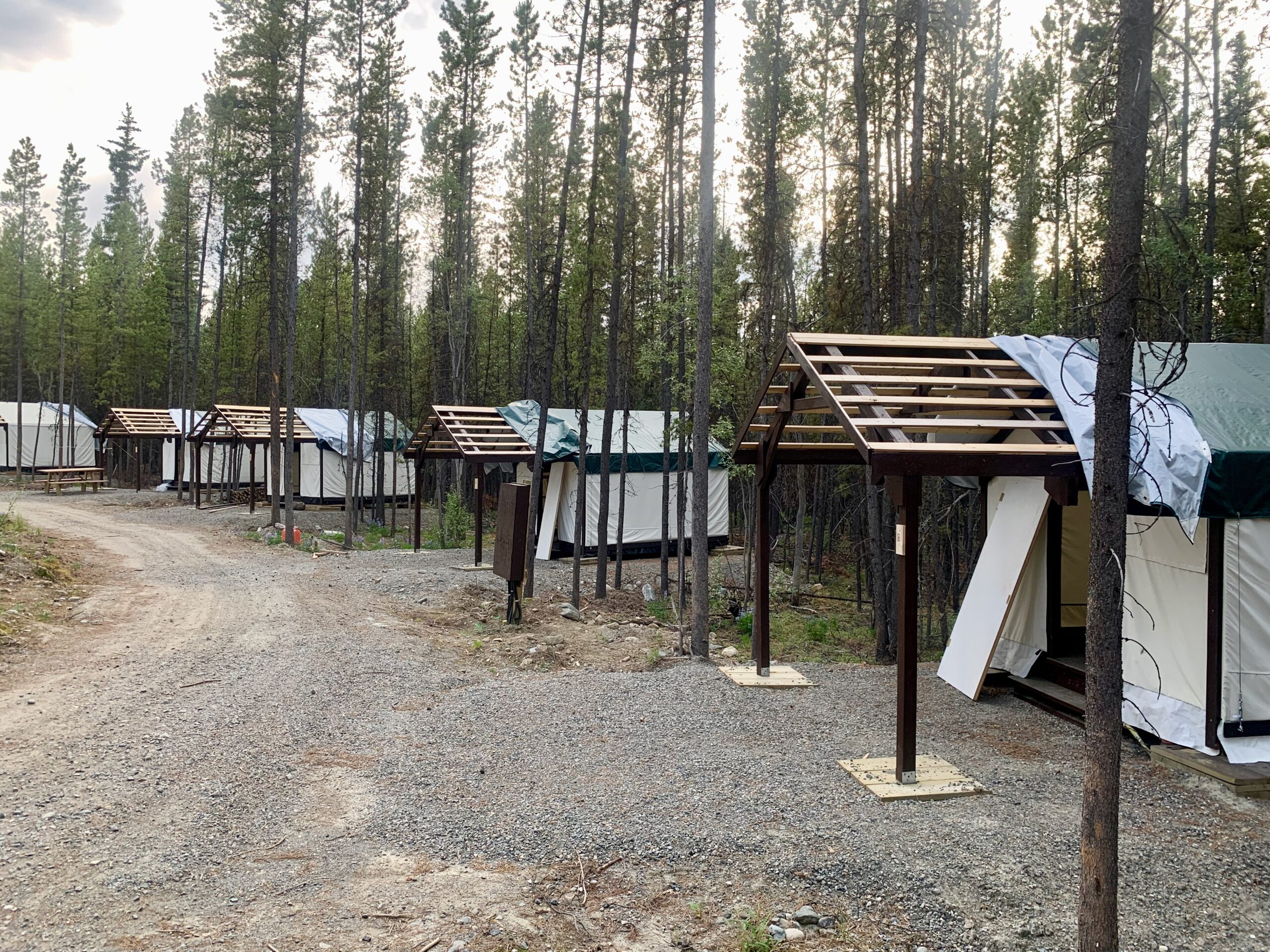
Set inside four acres of scattered pine trees, there are 25 almost finished walled tents — basically a room like a square yurts — each of which will have two beds, electricity and USB chargers and a front porch boardwalk patio. The walled tents are roughly in a semi-circle around a very large central brick patio with a fire pit, a fully kitted out communal kitchen, loos and showers. There will also be 20 tent camping places. And there’ll be a workshop where bikers can strip down their machines and fix whatever needs to be fixed. A big draw, I think, will be the already functioning restaurant, the Wolf’s Den, and full service bar.
Workmen were all over the place like ants when I camped — sawing, drilling, nailing, screwing, assembling, testing just about everything in sight. Another month or so and they’ll be all but done. Bruce (and a partner, Chris Saunders) has already sunk CAN$1.2 million into the project but I think it’ll work. Being inherently biker friendly (cars are not allowed enter!) is a big draw. But so too are the charges: $110 a night for a two bed wall tent and $35 per person for a tent site is good value based on what I’ve experienced.
Bruce is pitching for the older market — bikers from their 40s upwards and is not interested in “squids”? Squids? I said, baffled. “Yeah, too much money, shorts, no helmet and they’re pulling wheelies downtown”.
I asked him, as a biker experienced in the region, about the Dalton.
“I’ve heard of bikes that got stuck in the mud and left there, right in the middle of the road,” he said. “They waited till it dried up and they could basically chisel it out and continue riding . . . It happens. Or you hit a bear or a Moose or some other dumb ass.”
Hmmm. . .
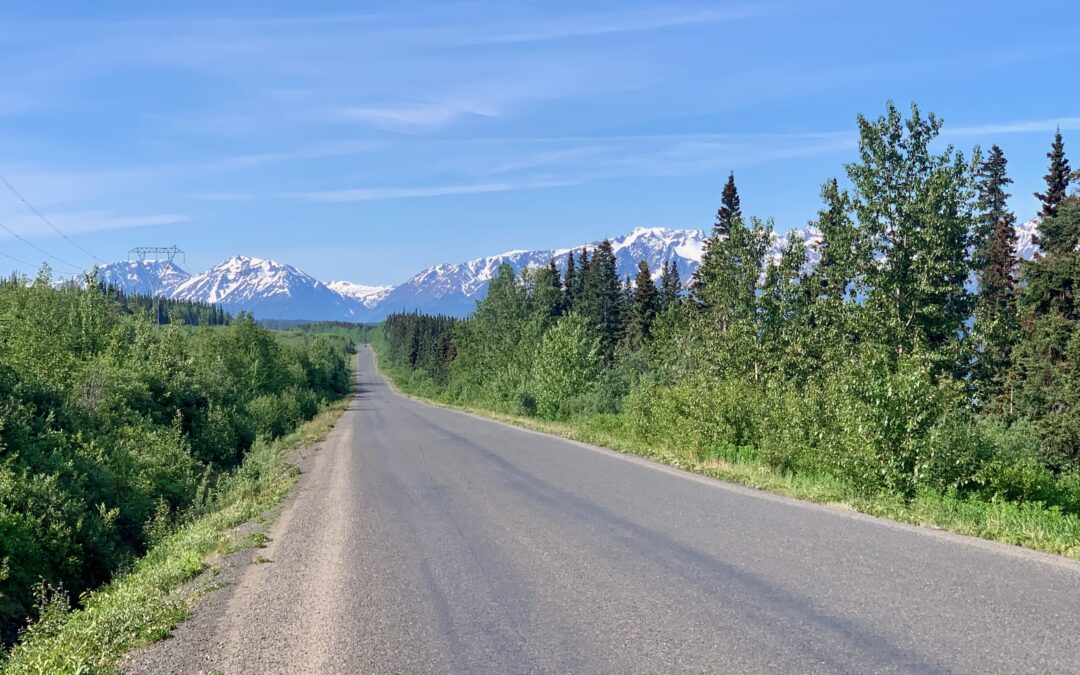
Fear not, young Murtagh. Folks up north are always telling tales about how bad the Dalton Highway, but at this time of year, it’ll be flat, hard gravel, so not a bother.
Hi Peter, I am really enjoying reading your blog, I leave it for a few weeks and then binge on the posts I have missed – you are so adventurous, and take really interesting photos! (I remember you from Trinity and The Classical Society!)
Enjoy!!! And many thanks.